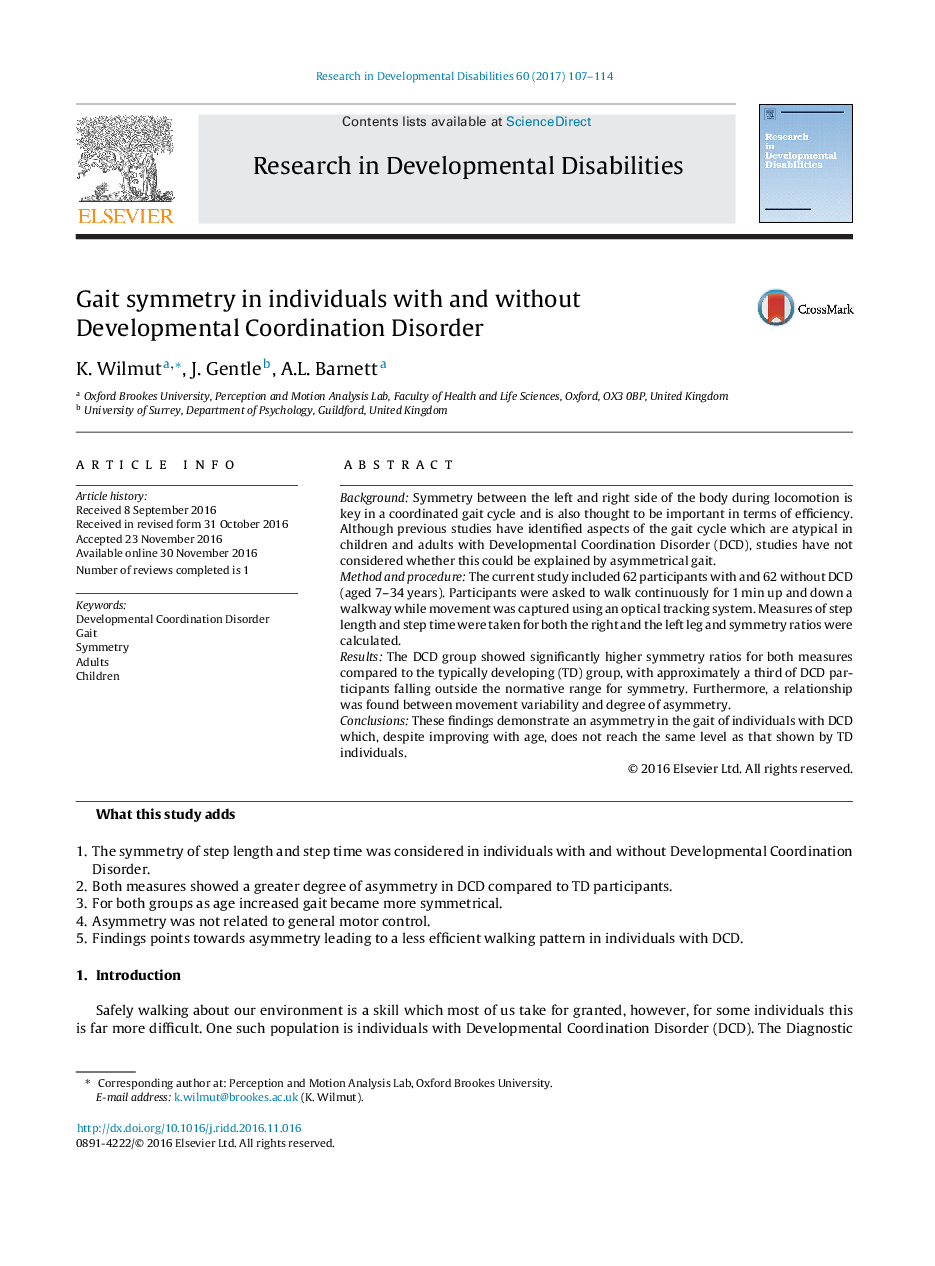| Article ID | Journal | Published Year | Pages | File Type |
|---|---|---|---|---|
| 4941019 | Research in Developmental Disabilities | 2017 | 8 Pages |
BackgroundSymmetry between the left and right side of the body during locomotion is key in a coordinated gait cycle and is also thought to be important in terms of efficiency. Although previous studies have identified aspects of the gait cycle which are atypical in children and adults with Developmental Coordination Disorder (DCD), studies have not considered whether this could be explained by asymmetrical gait.Method and procedureThe current study included 62 participants with and 62 without DCD (aged 7-34 years). Participants were asked to walk continuously for 1Â min up and down a walkway while movement was captured using an optical tracking system. Measures of step length and step time were taken for both the right and the left leg and symmetry ratios were calculated.ResultsThe DCD group showed significantly higher symmetry ratios for both measures compared to the typically developing (TD) group, with approximately a third of DCD participants falling outside the normative range for symmetry. Furthermore, a relationship was found between movement variability and degree of asymmetry.ConclusionsThese findings demonstrate an asymmetry in the gait of individuals with DCD which, despite improving with age, does not reach the same level as that shown by TD individuals.
